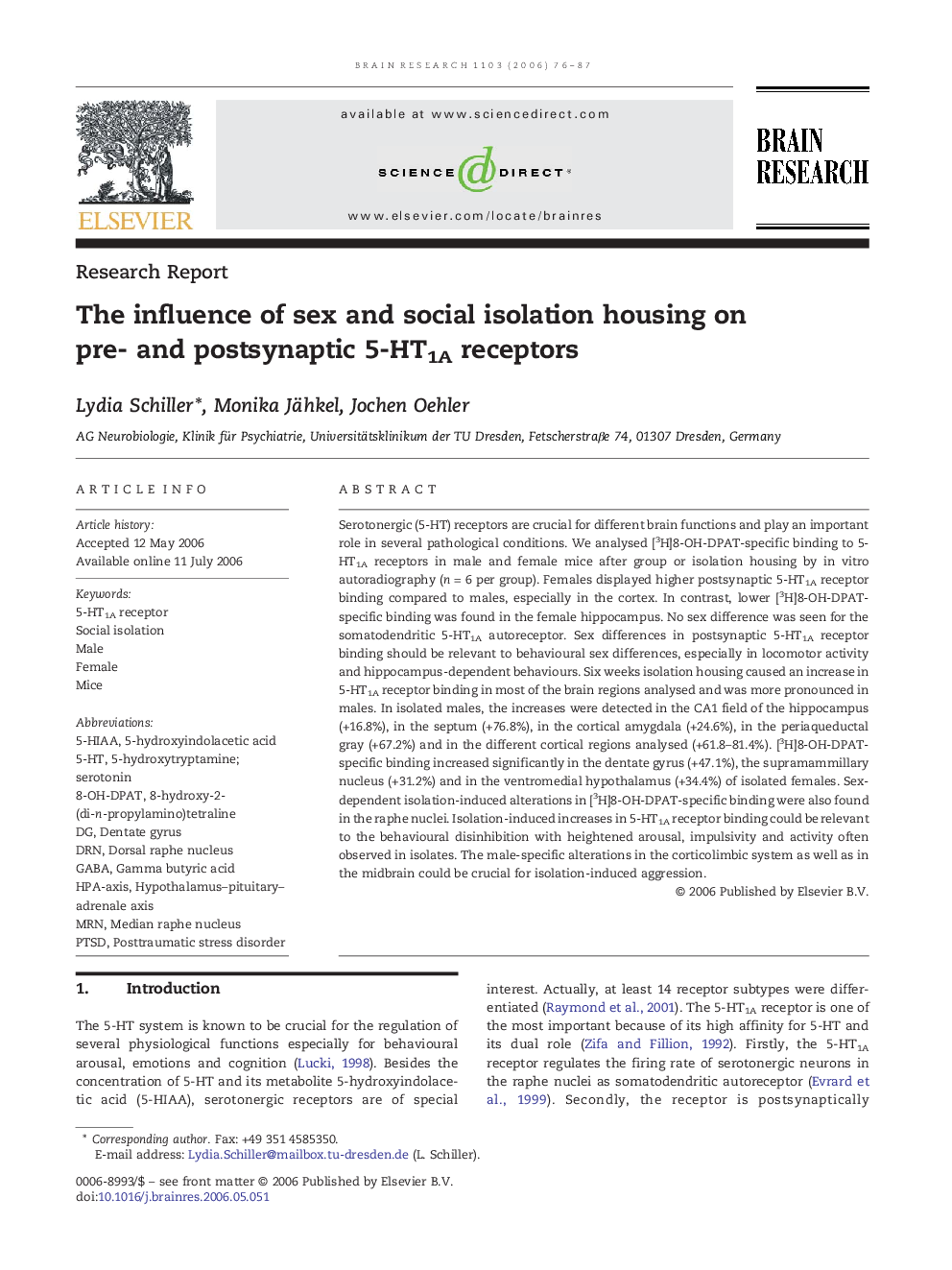| کد مقاله | کد نشریه | سال انتشار | مقاله انگلیسی | نسخه تمام متن |
|---|---|---|---|---|
| 4332561 | 1292903 | 2006 | 12 صفحه PDF | دانلود رایگان |

Serotonergic (5-HT) receptors are crucial for different brain functions and play an important role in several pathological conditions. We analysed [3H]8-OH-DPAT-specific binding to 5-HT1A receptors in male and female mice after group or isolation housing by in vitro autoradiography (n = 6 per group). Females displayed higher postsynaptic 5-HT1A receptor binding compared to males, especially in the cortex. In contrast, lower [3H]8-OH-DPAT-specific binding was found in the female hippocampus. No sex difference was seen for the somatodendritic 5-HT1A autoreceptor. Sex differences in postsynaptic 5-HT1A receptor binding should be relevant to behavioural sex differences, especially in locomotor activity and hippocampus-dependent behaviours. Six weeks isolation housing caused an increase in 5-HT1A receptor binding in most of the brain regions analysed and was more pronounced in males. In isolated males, the increases were detected in the CA1 field of the hippocampus (+16.8%), in the septum (+76.8%), in the cortical amygdala (+24.6%), in the periaqueductal gray (+67.2%) and in the different cortical regions analysed (+61.8–81.4%). [3H]8-OH-DPAT-specific binding increased significantly in the dentate gyrus (+47.1%), the supramammillary nucleus (+31.2%) and in the ventromedial hypothalamus (+34.4%) of isolated females. Sex-dependent isolation-induced alterations in [3H]8-OH-DPAT-specific binding were also found in the raphe nuclei. Isolation-induced increases in 5-HT1A receptor binding could be relevant to the behavioural disinhibition with heightened arousal, impulsivity and activity often observed in isolates. The male-specific alterations in the corticolimbic system as well as in the midbrain could be crucial for isolation-induced aggression.
Journal: Brain Research - Volume 1103, Issue 1, 4 August 2006, Pages 76–87